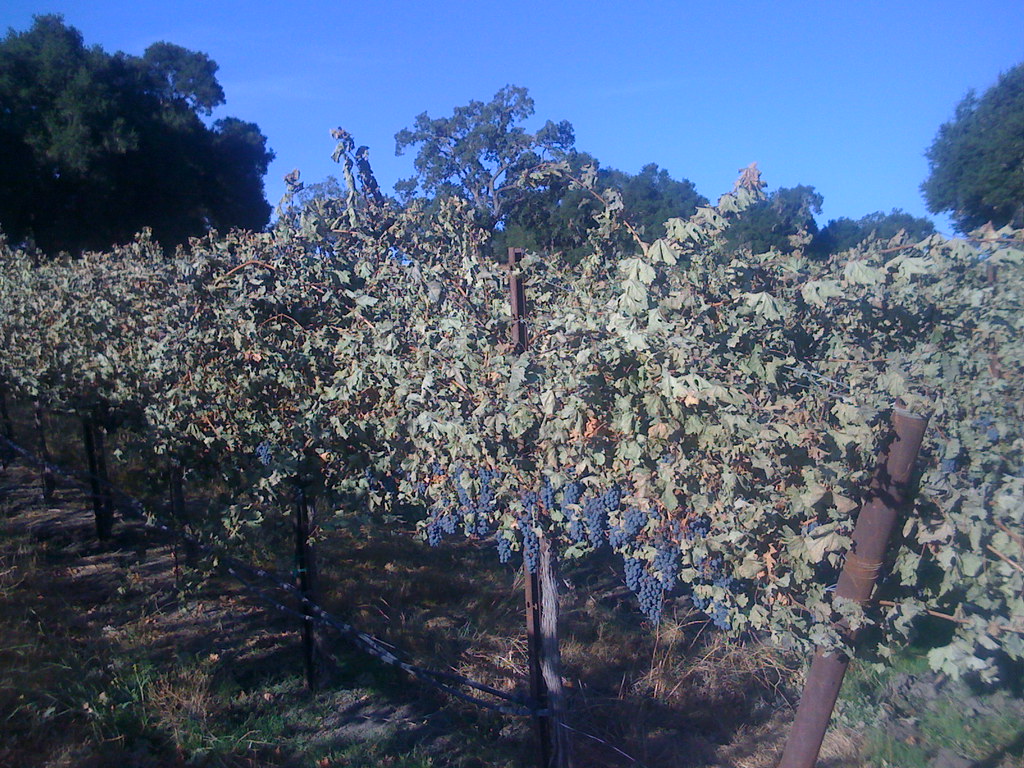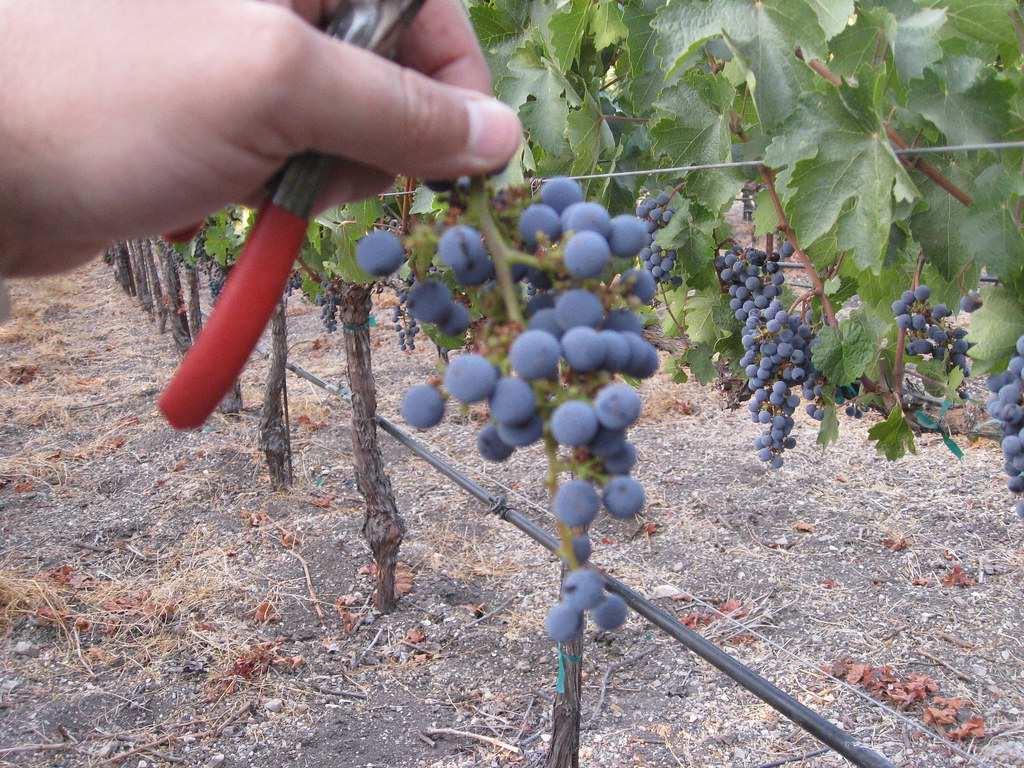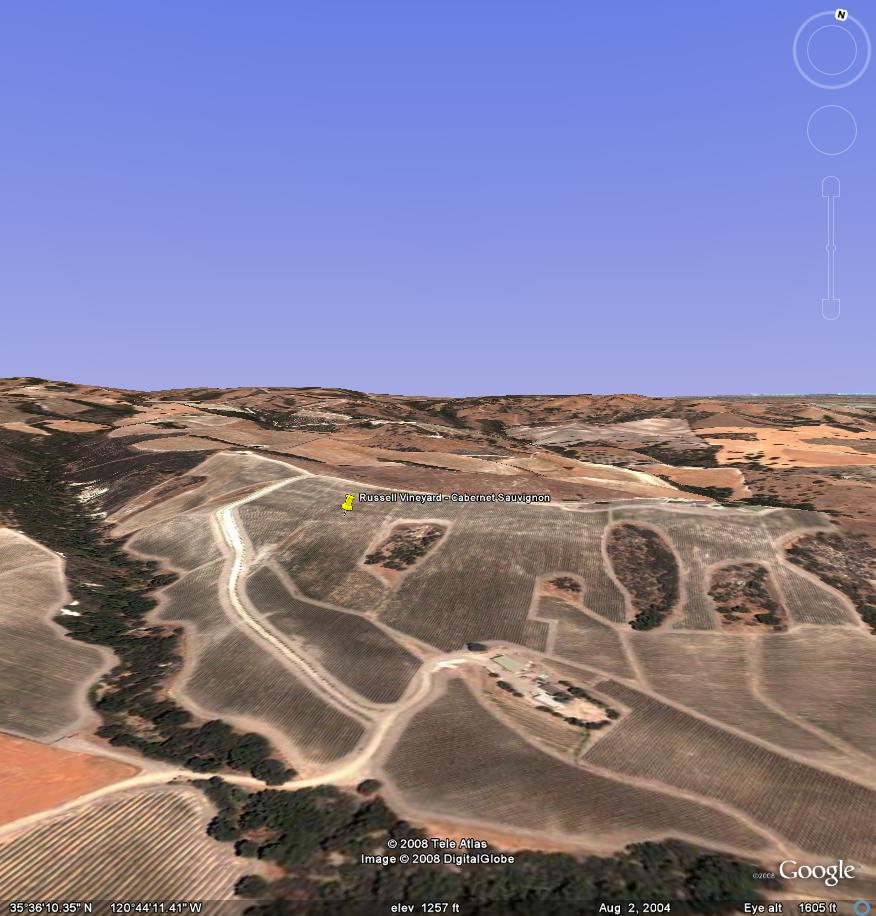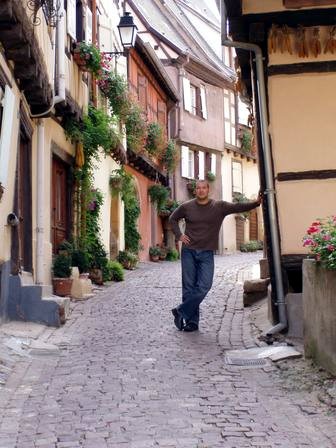



4-25-09 – Marseilles & Bandol
Michel and Anna invited me to go to Bandol, to perhaps go sailing on Michel’s sailboat. I met them in front of the hotel , and we left in their car. We drove down the Rhone valley, past Aix-en-Provence, Mont Luberon, and down toward the coast. Provence has beautiful countryside, orderly farms, planted in espaliered fruit trees, with tall cypress and platane trees lining the fields to protect against le Mistral. At the same time, it still seems very wild and natural; the homes are built from the same rock of the mountains and hills all around, and the scrubby ‘Garrigue’ brush is largely composed of wild herbs and flowers that blend seamlessly into the edges of the farms themselves. It is difficult to see where nature ends and the hand of man is a very subtle thing here.
About an hour into the drive, we went through a tunnel, and emerged with the sea in sight, and Marseilles spread out before us. This is a major seaport – ships of every description were in evidence, loading and unloading cargo from around the world. Ferries from here reach Rome, Corsica, Barcelona, Genoa, Beirut, Alexandria, Lybia, Morocco, and Algeria. Humans have lived around here for 30,000 years, evidenced by cave paintings in the area - It was established as a seaport by the Phonecian Greeks 3,000 years ago, and was important to every power since. The Vieux Port is still bustling within its very sheltered walls, but today it is filled with pleasure boats, instead of the vessels of commerce which used to bring the wealth of the world here. We crept up on the road along the Cornice, where you can view out to sea. It is possible to see the islands where the Count of Monte Cristo was supposed to have been held as a captive, and he escaped by swimming away in the sea.
From here, we turned a bit inland, and followed the motorway toward Toulon. We passed Cassis, which is famous for the Calanques – a landscape of high mountains that fall into secluded fijord-like grottos – perfect for boating and swimming. We arrived soon at Bandol, which is both a larger wine region made up of several villages, and a small seaside city. We found Michel’s boat, the Llhassa, which is about a 40’ sailing boat, and set up aboard. The wind was blowing between 25 and 40 knots while we were there, and the entire harbor was filled with the sound of whistling rigging of the hundreds of boats in the marina. We had lunch on the boat, and enjoyed the combination of warm sun with cooling breezes. It was far too windy to go out sailing – outside the protection of the harbor, the sea was whipped into whitecaps, even within the sheltered bay.
We walked the waterfront, checking out the boats – some of them were quite impressive megayachts – also the motorcycle variety was very good! Many groups of people were playing Petanque on the crushed granite boules court – I guess that this is the Provencale sport, and perfect for a breezy Saturday afternoon with one’s friends!
After several hours, we packed our things and left to visit a Domaine owned by friends of Anna & Michel. We drove up into the mountains, quickly gaining altitude as we left the seaside behind. Vines appeared very quickly once we rounded the first bend from the sea, and as we appeared in a higher valley, every hillside was terraced and planted to vines all around.
We arrived at the Domaine de La Laidière, high above the valley floor and with a commanding view of the village of Sainte Anne d’Evenos. We were received by Freddy Estienne, who owns the Domaine. His father and grandfather established the estate in 1941, with some small vineyards which are still owned by the family, and began to produce wine. Since then, they have purchased other vineyards slowly and reclaimed an impressive high terraced slope above the winery which had fallen into disuse over many years, replanting the traditional cepages of Mourvedre, Grenache and Cinsault.
Freddy makes his wines very traditionally, but uses stainless steel, temperature controlled fermentors for the initial fermentation and then ages the wines in large wooden foudres for about 18 months for the reds. He only buys a new foudre every year or two, so the wines are not at all dominated by the wood, but instead stand on the strength of the wines themselves.
We tasted many wines – the white and rose are beautifully refreshing. The rose is a direct pressed wine, meaning that it does not remain on the skins for any time at all, and as such is a pale, delicious, fresh wine. The reds are deep and serious, relying heavily upon the Mourvedre – a grape that produces deep, richly textured wines with aromas of rich earth, blackfruits, and sometimes even leather and blood (this is a good thing, a very good thing!) He opened many vintages for us, both from recent bottlings as well as dating back to 1993.
At the end of our tasting, he beckoned us downstairs into the storage cellar for bottled wines. He has a collection of bottles going back to the first years of the estate, under his father and grandfather. He selected a bottle from his dwindling supply of the 1950 vintage, and brought it upstairs, opening it for us in an overwhelming show of generosity. It was aged, but still vibrant and alive, and amazingly consistent with the younger wines we had been sampling.
This is what wine can be about – it can become more than just a beverage, more than just an art or craft or agriculture, or hobby. To imagine the efforts and toils that Freddy’s grandfather and father endured to bring this wine to bottle – it is staggering. To realize their belief in the terroir of Bandol itself (theirs was one of the Domaines which were instrumental in developing the Appellation d’Origine Controlee for Bandol,) and then to taste the wine which came from their early vintages here in this place – it was to see how wine can also become a thread of history and of place. It ties the generations of their family together, and ties them to this place where they have made their lives. It is a bit of time-travel, a chance to taste the still-lingering fruit from that long-ago summer, and to remember all that has changed since. And yet the continuity between each of the bottles we tasted reminds one of all that does not change – the terroir, the cycle of the sun & seasons, the rhythms of life.
Merci Beaucoup, Beaucoup, Beaucoup, Freddy for sharing this precious bottle with us and for connecting us with your family and your sublime place as well. I will always remember this show of generosity!
www.laidiere.com















